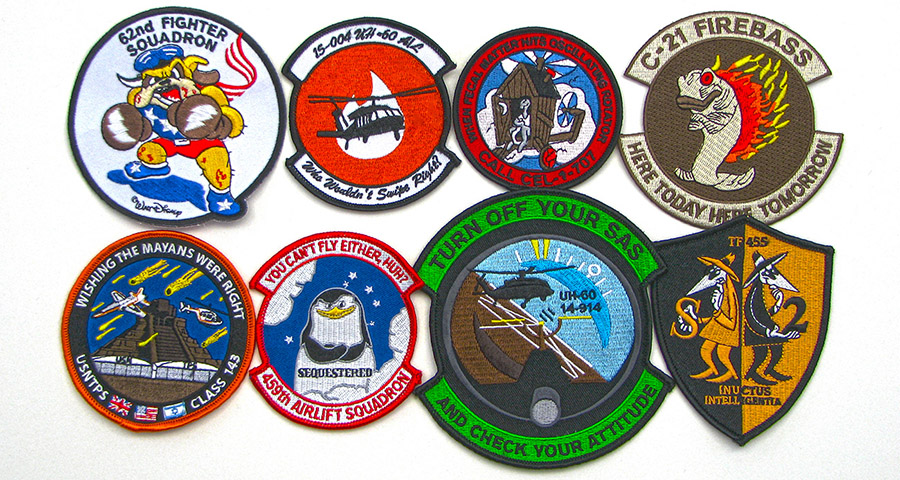
Military patches are a universal part of uniforms, both in the United States and around the world. When did embroidered patches come into use, and what makes them so important as a part of the standard military uniform?
Patches Are Relatively New to the U.S. Military
The history of military patches in the United States is relatively brief. Some soldiers in the Civil War wore them for identification. These were typically made by mothers, wives or girlfriends on the home front.
At the time, virtually all embroidery was done by hand, just as it had been for thousands of years. Each patch was at least a little bit different, so it would have been difficult or impossible to standardize them. But not long after the end of that war, changes already wrought by the Industrial Revolution brought big changes to embroidery.
The invention of the sewing machine, and later the powered embroidery machine, greatly decreased the cost and increased the speed of embroidery production. That made it possible for custom embroidered patches to be produced rapidly and consistently.
By World War I, machine embroidery was well-established. After U.S. troops joined the war in 1917, the Army’s 81st Infantry Division created what’s come to be known as the first shoulder sleeve insignia, or tactical patch. The troops had trained at Fort Jackson, S.C. Near the fort was a body of water known as Wildcat Creek. Their patch design featured the silhouette of a wildcat on an olive drab background.
Within two decades, every Army group, squad, corps, and division had its own unique shoulder sleeve insignia. The 82nd Airborne had its mirror-image pair of “A”s for All-American. The 1st Infantry Division its “Big Red One,” and so on for all the others. Before long, insignia including unit patches and U.S. flags became a standard part of the uniform.
Speaking of flag patches …
“Why Is That Flag Backward?”
You’ve undoubtedly seen military personnel wear a U.S. flag patch on their right shoulder. It’s an official part of the uniform. It appears to be “backward” from the usual position, with the stars on the right side, rather than the left where we normally see it. Yet if they wear a flag on their left shoulder, it’s in the traditional position. What’s up with the flipped flag on the right?
It turns out there’s a very good reason for that. The official Army Regulations (AR 670-1, for those who are keeping track) requires that the star field of the flag face forward. The appearance of the flag is to be as if it’s being carried forward on a battlefield.
The rationale is that when a flag is being carried into battle by cavalry or infantry, the stars are closest to the flagpole. The forward momentum causes the stripes to stream back. If the flag is worn on the left shoulder, it’s moving forward when viewed from the traditional position. If you’re looking at the flag worn on the right shoulder (with the stars to your right) the flag is still moving forward as the soldier marches forward.
Velcro® Makes Patches Even Better
With the invention of the hook-and-loop fastener (commonly known by the Velcro® brand), patches became even more common. The flag patches mentioned above, for example, attach to uniforms with Velcro®. That allows them to be removed quickly as needed. In a field deployment, the full-color flag can easily be replaced with a muted color “subdued” style that doesn’t stand out against camouflage.
The hook and loop attachment method hastened the development of other embroidered patches as well. Known as morale patches, these are informal, unsanctioned military patches that express a point of view or a humorous saying. These patches are not an official part of the uniform and can be blunt in their statements. The Velcro® fastener makes it easy to take the patch off quickly if a superior is likely not to be amused by it.
Morale patches can be something simple – a word or phrase – or something more ornate with custom designs to match a unit’s unofficial symbol or motto. It’s entirely up to those ordering the patches. Any reputable patch supplier can be provided top quality custom morale patches right alongside more traditional shoulder insignia and other patches.
The key to good military patches is finding a dependable supplier. An experienced custom military patch provider knows that customer service and product quality are the keys to success. Fill out a free quote and get started with one of our artists today!